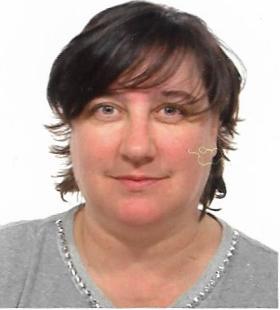Studying at the University of Verona
Here you can find information on the organisational aspects of the Programme, lecture timetables, learning activities and useful contact details for your time at the University, from enrolment to graduation.
Academic calendar
The academic calendar shows the deadlines and scheduled events that are relevant to students, teaching and technical-administrative staff of the University. Public holidays and University closures are also indicated. The academic year normally begins on 1 October each year and ends on 30 September of the following year.
Course calendar
The Academic Calendar sets out the degree programme lecture and exam timetables, as well as the relevant university closure dates..
| Period | From | To |
|---|---|---|
| TLB LEZ 1ANNO 1 SEM 16-17 | Oct 2, 2017 | Dec 7, 2017 |
| TLB LEZ 2ANNO 1 SEM 16-17 | Oct 2, 2017 | Dec 7, 2017 |
| TLB LEZ 3ANNO 1 SEM 16-17 | Oct 2, 2017 | Dec 7, 2017 |
| TLB LEZ 3ANNO 2 SEM 16-17 | Mar 5, 2018 | May 4, 2018 |
| TLB LEZ 2NNO 2 SEM 16-17 | Mar 5, 2018 | May 4, 2018 |
| TLB LEZ 1NNO 2 SEM 16-17 | Mar 5, 2018 | May 4, 2018 |
Exam calendar
Exam dates and rounds are managed by the relevant Medicine Teaching and Student Services Unit.
To view all the exam sessions available, please use the Exam dashboard on ESSE3.
If you forgot your login details or have problems logging in, please contact the relevant IT HelpDesk, or check the login details recovery web page.
Should you have any doubts or questions, please check the Enrollment FAQs
Academic staff
Arici Cecilia
 cecilia.arici@univr.it
cecilia.arici@univr.it
 + 39 045 812 8266
+ 39 045 812 8266
 marco.ferdeghini@univr.it
marco.ferdeghini@univr.it
 045 812 47 84 (Segreteria) 045 802 74 89 (Segreteria di Istituto)
045 812 47 84 (Segreteria) 045 802 74 89 (Segreteria di Istituto)
 marina.foroni@univr.it
marina.foroni@univr.it
 guido.martignoni@univr.it
guido.martignoni@univr.it
 anja.meyer@univr.it
anja.meyer@univr.it
 maria.murgia@aovr.veneto.it
maria.murgia@aovr.veneto.it
 negrivr@tin.it
negrivr@tin.it
 bruno.sandini@aulss8.veneto.it
bruno.sandini@aulss8.veneto.it
Study Plan
The Study Plan includes all modules, teaching and learning activities that each student will need to undertake during their time at the University.
Please select your Study Plan based on your enrollment year.
1° Year
| Modules | Credits | TAF | SSD |
|---|
2° Year activated in the A.Y. 2018/2019
| Modules | Credits | TAF | SSD |
|---|
3° Year activated in the A.Y. 2019/2020
| Modules | Credits | TAF | SSD |
|---|
| Modules | Credits | TAF | SSD |
|---|
| Modules | Credits | TAF | SSD |
|---|
| Modules | Credits | TAF | SSD |
|---|
Legend | Type of training activity (TTA)
TAF (Type of Educational Activity) All courses and activities are classified into different types of educational activities, indicated by a letter.
Clinical practice (2nd year) (2018/2019)
Teaching code
4S01546
Teacher
Coordinator
Credits
18
Language
Italian
Scientific Disciplinary Sector (SSD)
MED/46 - BIOTECHNOLOGY AND METHODS IN LABORATORY MEDICINE
Period
Not yet assigned
Learning outcomes
At the end of the training activities in the three fundamental areas (Microbiology, Pathological Anatomy, Immunohematology and Transfusion), the student must be able to achieve specific training objectives:
1. Microbiology Area:
• prepare and use the main main cultivation areas;
• apply all the techniques related to the sowing of biological materials, to the isolation and identification of the germs and to the production of antibiograms;
• use the basic instrumentation (laminar flow hoods, thermostats, pipettes and micropipettes);
• apply Gram stain and know the Zielh Nielsen and Giemsa staining techniques;
• apply the techniques related to serological determinations and analytical techniques in microplate;
• know the procedures and applications related to agglutination tests, immunofluorescence and ELISA and PCR techniques.
2. Pathological Anatomy Area: Histopathology Sector ;
• recognizing and describing "non-compliant" samples;
• know of methods of sampling of the surgical material;
• knowledge of methods of processing the material and the paraffin embedding of the processed material;
• use the microtome;
• prepare sections of cryo-included material using the cryostat;
• apply standard colors (EE) and the most used special colors (Alcian Pas, Giemsa, Masson, Gomori, C.A.B., Perls);
• use the automated system for mounts and slides;
• use the laboratory equipment by applying the methods of control and maintenance and disinfestation;
• carry out quality checks before delivery of readings for reading under an optical microscope. Cytopathology Sector;
• recognize and describe vaginal and extravaginal "non-compliant" samples;
• prepare cytological preparations from biological liquids (urine, ascitic fluid, pleural fluid, liquor) using centrifugation and cytocentrifuge;
• set up cytological preparations from sputum and bronco-aspirates;
• know the methodology related to "liquid-based cytology";
• apply the smear and fixation methods on slide of cytological material;
• perform standard Papanicolaou staining and rapid staining of haematoxylin Eosin;
• assemble the cytological preparations.
3. Immunohaematology and Transfusion Area:
• acquire the standard techniques for the preparation of the 1st and 2nd level blood components and their conservation;
• recognize the validation methods of the blood components (legal examinations, interpretation of the results);
• acquire the analysis techniques used in pre-and post-transfusion investigations, in Newborn Hemolytic Disease, Acquired Hemolytic Disease and in any other specialized SIT sectors;
• recognize the methods for accepting the camps.
Examination Methods
The final exam is composed of:
1. An evaluation of the training period carried out and the elaborate product, by the reference guide of the structure where the student carries out the internship, with a maximum score of 10 points.
2. A written test consisting of 40 multiple choice and open questions on specific topics of the program. The maximum score is 8 points (0.2 points per question).
3. An oral exam to ascertain the knowledge of the topics in the program and the ability of the student to apply analytical and argumentative skills, maximum score of 12 points.
4.The final vote is expressed in thirtieths and the year is exceeded if you reach 18/30.
Career prospects
Module/Programme news
News for students
There you will find information, resources and services useful during your time at the University (Student’s exam record, your study plan on ESSE3, Distance Learning courses, university email account, office forms, administrative procedures, etc.). You can log into MyUnivr with your GIA login details: only in this way will you be able to receive notification of all the notices from your teachers and your secretariat via email and soon also via the Univr app.
Gestione carriere
Risultati di apprendimento attesi
Orario Lezioni
Si pubblicano gli orari definitivi delle lezioni relativi al 2° semestre dell'A.A. 2023/2024:
La frequenza in aula delle lezioni è obbligatoria ed è prevista per tutti e tre gli anni di corso.
1 ANNO: Aula B lente se non diversamente indicato
2-3 anno Aula F biologici
Documents
| Title | Info File |
|---|---|
|
|
pdf, it, 35 KB, 26/09/23 |
|
|
pdf, it, 32 KB, 22/02/24 |
|
|
pdf, it, 31 KB, 29/09/23 |
|
|
pdf, it, 33 KB, 27/02/24 |
|
|
pdf, it, 28 KB, 28/09/23 |
|
|
pdf, it, 28 KB, 22/02/24 |
Documenti utili
In questa pagina è inserita la guida che detta istruzioni per i casi di infortunio durante le attività di tirocinio con la modulistica da compilare.
Una volta compilata la modulistica questa va consegnata all'Unità operativa Servizi Logistici dell'Università di Verona.
Documents
| Title | Info File |
|---|---|
|
|
pdf, it, 948 KB, 10/12/21 |
|
|
msword, it, 46 KB, 10/12/21 |
|
|
pdf, it, 527 KB, 10/12/21 |
|
|
pdf, it, 164 KB, 10/12/21 |
|
|
pdf, it, 1252 KB, 12/03/24 |
|
|
msword, it, 148 KB, 10/12/21 |
Calendario Esami
in questa pagina verranno pubblicati i calendari degli esami del Corso di Laurea.
Documents
| Title | Info File |
|---|---|
|
|
pdf, it, 51 KB, 05/12/23 |
|
|
pdf, it, 52 KB, 11/12/23 |
|
|
pdf, it, 51 KB, 11/01/24 |
|
|
pdf, it, 47 KB, 11/01/24 |
|
|
pdf, it, 49 KB, 11/12/23 |
Documents
| Title | Info File |
|---|---|
|
|
msword, it, 50 KB, 09/12/21 |
|
|
octet-stream, it, 107 KB, 09/12/21 |
|
|
pdf, it, 948 KB, 09/12/21 |
|
|
pdf, it, 527 KB, 09/12/21 |
|
|
octet-stream, it, 61 KB, 09/12/21 |
|
|
pdf, it, 164 KB, 09/12/21 |
|
|
msword, it, 98 KB, 09/12/21 |
|
|
msword, it, 148 KB, 09/12/21 |
Student login and resources
Attività a scelta dello studente
in questa pagina vengono pubblicati i calendari dei seminari e delle attività a scelta dello studente che il corso propone agli studenti immatricolati con gli aggiornamenti delle attività didattiche che di volta in volta vengono programmate e rese disponibili
Documents
| Title | Info File |
|---|---|
|
|
pdf, it, 100 KB, 12/04/24 |
|
|
pdf, it, 128 KB, 05/04/24 |



































